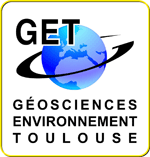Neogene basin infilling from cosmogenic nuclides (10Be and 21Ne) in Atacama, Chile: implications for paleoclimate and copper supergene enrichment
Chronologie de la sédimentation dans un bassin néogène à partir de nucléides cosmogéniques (10Be et 21Ne) dans l'Atacama (Chili) : implications pour le paléoclimat et la minéralisation de cuivre supergène
Résumé
Increasing evidence suggests that supergene exotic copper deposits were emplaced during periods of geomorphic quiescence and pulses of humidity in arid environments. We tested this idea in the Centinela Mining District in the Atacama Desert (northern Chile). We collected 14 sand samples at depth (up to 110 m) in two open-pit mines (Central Tesoro and Mirador) exposing Miocene sediment, and located in the El Tesoro Basin, which hosts two exotic copper-rich orebodies. We inverted the 10Be and 21Ne concentrations by using a two-box model (IMIS, inversion of multi-isotopes in a sedimentary basin) composed of an eroding source of sediment and a depositional sedimentary basin, and by selecting denudation and sedimentation rate histories that can explain our data. The ages found demonstrate that the two exotic orebodies were deposited during a narrow period between 14 Ma (10 Ma younger than previously thought) and 9.5 Ma, when an ignimbrite covered the sedimentary sequence. The dated lower exotic copper orebody was deposited during or just before a sharp decrease in the sedimentation rates (from >100 to 0.5–5 m/Ma), which is consistent with published sedimentological and carbonate isotopic data in this district. This confirms the idea that exotic deposits form during a quiescence of the geomorphic activity. Nevertheless, our model suggests that the back-ground denudation rate providing sediment to these basins between ca. 14 Ma and ca. 9.5 Ma was surprisingly high (>250 m/Ma) for such an arid environment. These denudation rates can be explained by a relatively rapid local back-scarp retreat providing most of the sediment to these basins and possibly a wetter climate compared to the present. Then, during the period 10–7 Ma, the denudation rates decreased to >50 m/Ma. This decrease may correspond to a local progressive decrease in the slope of the surrounding hills, or to a progressive aridification, or a combination of both phenomena
Origine : Fichiers produits par l'(les) auteur(s)



